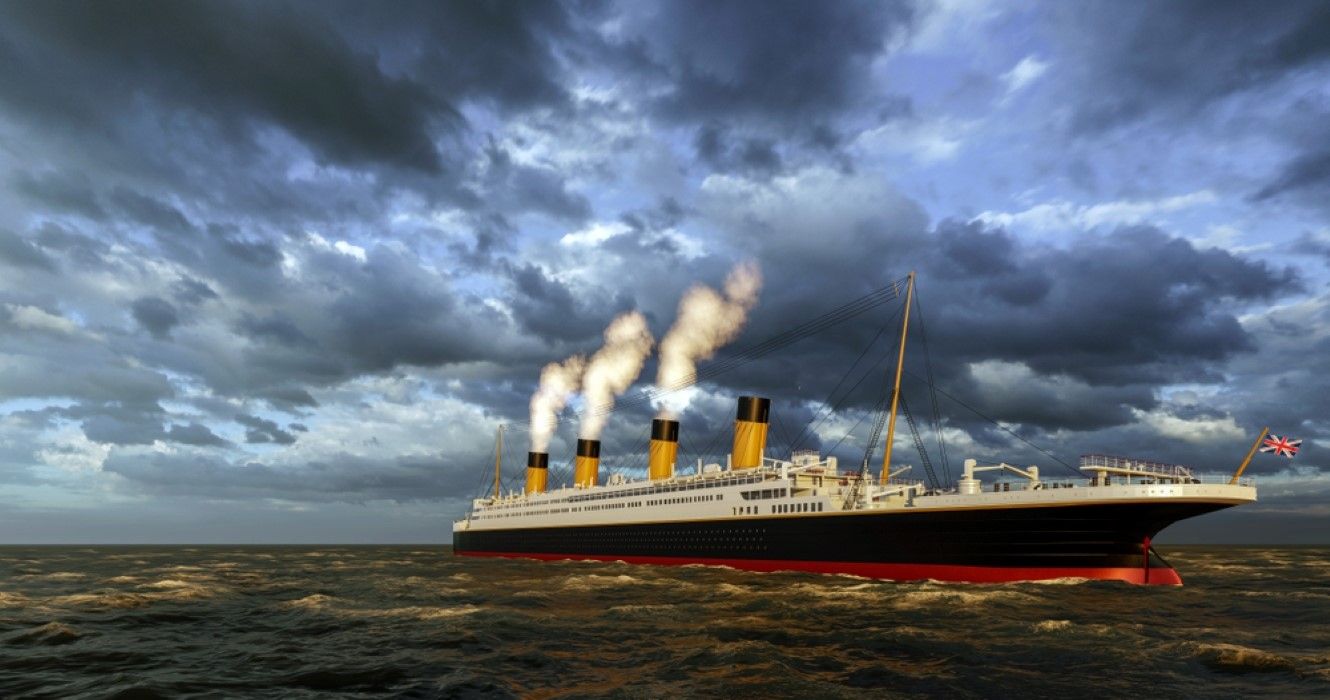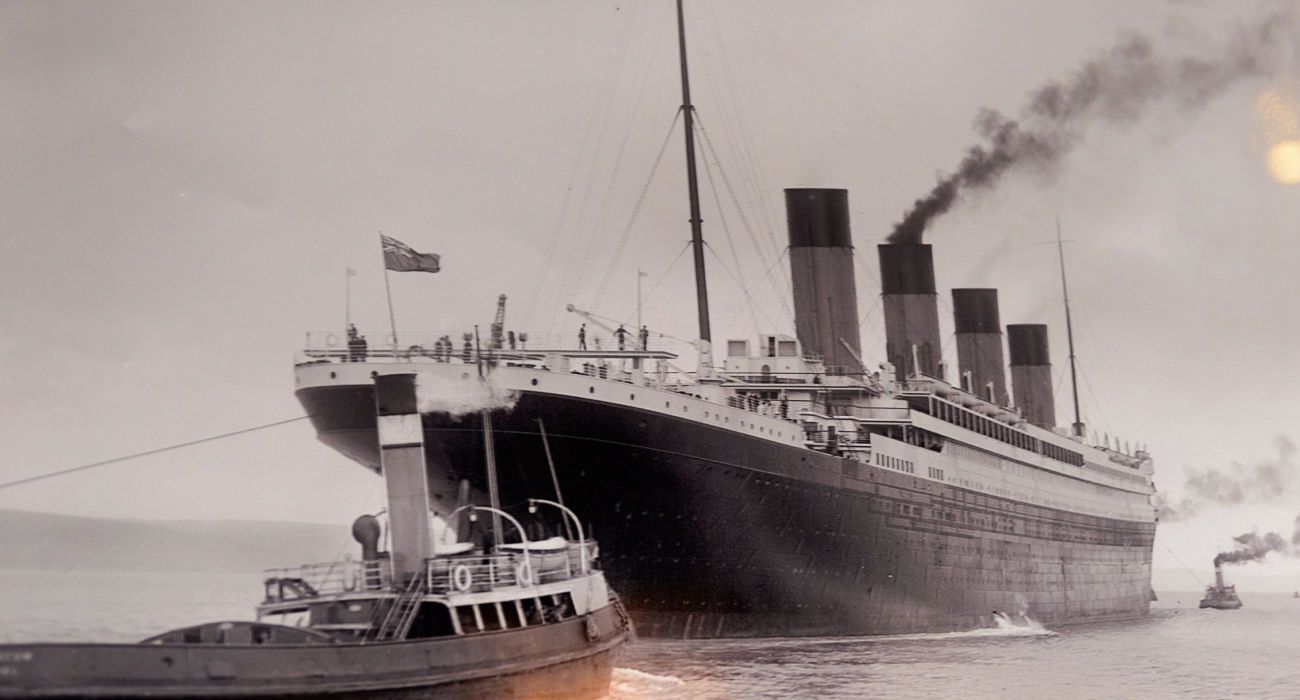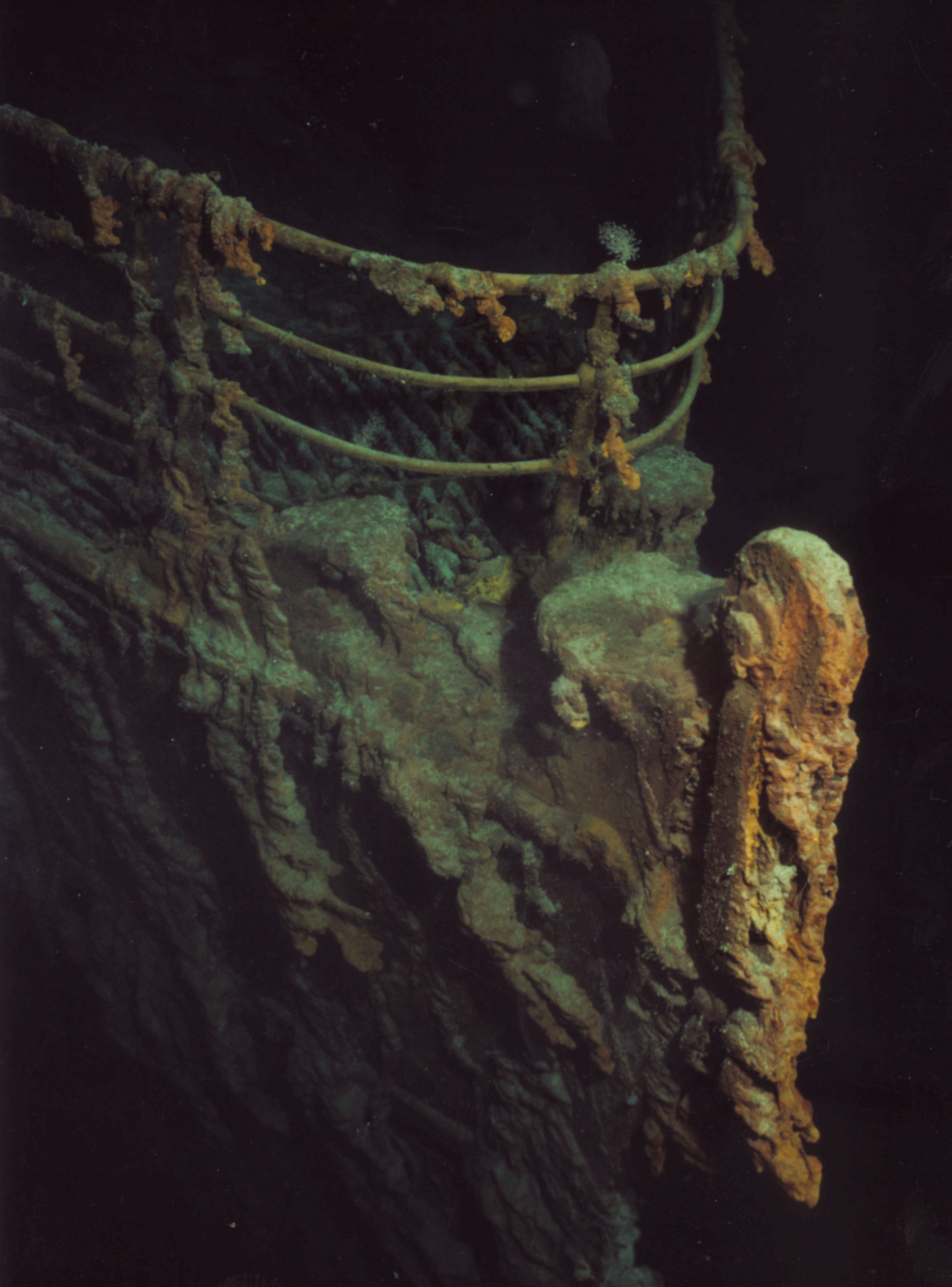Read update
- The Sinking Of The RMS Titanic Continues To Be A Mystery
Sometimes, resurrecting relics from the tragic chapters of history is about as fanciful as getting pigs to fly. It's just not worth the effort. Such is the case with the on-again, off-again notions of raising the Titanic, which prompted a great deal of discussion shortly after the 1997 release of director James Cameron's Oscar-winning epic Titanic.
Reclaiming the famed White Star Line shipwreck was even tackled in the 1980 motion picture Raise The Titanic, which suffered the same fate as the vessel, mercilessly sinking at the box office. And there's been no shortage of geniuses out there who had their own solutions on how to bring the ship back to the surface. Raising the RMS Titanic has always been on people's minds.
After several trips back to the drawing board, it turns out that raising the Titanic would be about as futile as rearranging the deck chairs on the doomed vessel. After a century on the ocean floor, the Titanic is apparently in such bad shape that it couldn't withstand such an endeavor for various reasons. And then there are those arguing that regardless of how ship-shape Titanic is today, committing to such a task would be highly unethical.
UPDATE: 2023/05/30 12:17 EST BY NOAH STAATS
The Sinking Of The RMS Titanic Continues To Be A Mystery
With the Titanic rapidly decomposing underwater, many scientists, researchers, and enthusiasts alike are worried. Some want to try and raise it, although this could destroy what's left of the iconic vessel. This article has been refreshed with new information, as well as photos throughout. What could end up happening to this underwater grave site?
Flashback To 1912: The Year RMS Titanic Sunk
Titanic was a big deal when it launched on April 10th, 1912, on its first voyage from Southampton, England, to New York. Boasting a length of 900 feet, a height of 25 stories, and weighing 46,000 tons, it was the most significant mobile vessel ever built at the time. Four days later, the Titanic struck an iceberg resulting in more than 1,500 dead with scarcely more than 700 survivors.
The wreckage on the ocean bed lay undetected for decades until 1985. That's when a team of scientists led by oceanographer Robert Ballard was able to locate the shipwreck some 13,000 feet below the surface of the Atlantic, about 370 miles southeast of Newfoundland.
In September 1985, Robert Ballard wanted to experiment with robotic submarines, a new type of technology that would be used for searching for sunken battleships and submarines. He asked the US Navy to allow him to try to locate the Titanic with the new technology. He was granted permission to proceed. People wondering if the Titanic was ever found can be assured that Robert Ballard discovered it after only two weeks of searching at a depth of 12,500 meters beneath the water.
Subsequent undersea ventures discovered that not only was the Titanic in a heavy state of decomposition, but it also had split into two pieces. A heavily damaged part of the hull on the starboard side of the bow provided evidence that the collision with an iceberg was quite severe.
Raising The Titanic Has Been Considered Before
- There have been countless efforts to raise and preserve the Titanic.
- The most successful operation was in 1998 when a company raised a 20-ton, 300-square-foot section of the sunken ship.
- There have been roughly 5,000 recovered items from the ship, including jewelry, toys, dishes, and pieces of equipment.
The discovery that the Titanic was in pieces made an intact recovery impossible. Still, news of the ship's condition didn't stop adventurous minds from coming up with ways to bring it back to civilization. Many ranged from seemingly feasible to using cranes mounted on salvage vessels. Others were ridiculous, like filling Titanic with ping-pong balls, attaching helium-filled balloons to the hull, and freezing the ship like an ice cube until the wreck would float.
Many people proposed to inflate large balloons beneath the Titanic, which would help raise it to the top. However, the problem was that the balloons had to be inflated at the correct speed and raised to the surface at the right speed. This is because extreme pressure could lead to the ship disintegrating.
An issue that has always been prevalent surrounding the lifting of the RMS Titanic is the volatility of the remaining vessel. As time has passed, the Titanic has degraded, leading to its structural integrity becoming very flimsy. Any movement could destroy the ship.
The most successful operation took place in 1998 when a company called the RMS Titanic Inc. on board the salvage vessel Abeille managed to raise a 20-ton, 300 square-foot section of the starboard hull that allegedly broke away from the ship on impact 86 years earlier. The recovery team also brought back some 5,000 artifacts, including jewelry, toys, dishes, and pieces of equipment used on the ship.
Microbes And Other Obstacles Surrounding The RMS Titanic
- The ocean's acidity is eating away at the Titanic's structure.
- If tampered with, much of the current Titanic would crumble.
- Many interior sections of the ship have broken down and collapsed.
So far, salvaging expeditions haven't been able to bring back anything bigger than the hull slab that is part of a major Titanic exhibit at the Luxor Hotel and Casino in Las Vegas. Oceanographers have pointed out that the hostile sea environment has wreaked havoc on the ship's remains after more than a century beneath the surface.
Saltwater acidity has been dissolving the vessel, compromising its integrity to the point where much of it would crumble if tampered with. Microbes responsible for the rusty stalactite growths on much of the hull and particularly visible on the deck railings have also eaten away at the ship, further weakening the structure.
The ship's interior is just as bad, with decks collapsing on every ship level. Passageways once accessible to robotic mini-subs have since broken down, and cabin compartments have all but deteriorated over time. It gets worse. In 2016, scientists discovered an organism called extremophile bacteria that's been more aggressive in destroying what's left of Titanic, leading some to conclude that the entire ship will be dissolved by 2030.
There Were Recently 3D Scans Released Of The Current Titanic's Condition
This year, a company called Magellan conducted a scan of the current state of the Titanic. With these groundbreaking images, people are able to view the two sections of the ship, as well as structural details and surrounding ocean debris. Because the RMS Titanic sunk so long ago, it's difficult to get a 100% accurate reading of the current site along with the ship's state of decomposition.
However, through 3D scanning, this is the first full-size imagery people have of the ship. Not only can this help scientists and researchers work to preserve the site as best possible, but also put together timelines and explanations of what truly happened that cold night in 1912.
These Titanic museums may also be worth checking out for those interested in its history.
What Will Happen To The Sunken Titanic?
- The Titanic is degrading at alarmingly fast rates: leading many to believe it may disappear entirely by 2030.
- Many museums and attractions have been created to memorialize the sunken ship.
- Attempts have been made to explore the ship through the company 'Oceangate' for $250,000.
With salvage out of the question, other concerns have been raised about what to do with parts of the vessel that can still be recovered.
Preservationists argue that the gradual decomposition of the vessel makes it more vital to retain objects associated with a famous and tragic chapter of human history. Naysayers argue that the Las Vegas exhibit is proof that any further reclamation attempts are little more than cash grabs.
Then others argue that the Titanic should be treated like a gravesite and that the 1,500 souls should remain undisturbed. However, oceanographers reveal that there's no evidence of human remains after several hundred dives since oceanic conditions and hungry bed-dwelling sea life have left behind no trace of their existence.
The Titanic has been degrading over the past 100+ years at the bottom of the North Atlantic Ocean. Because of this, it's very possible the entire ship could vanish by 2030.



.png)
